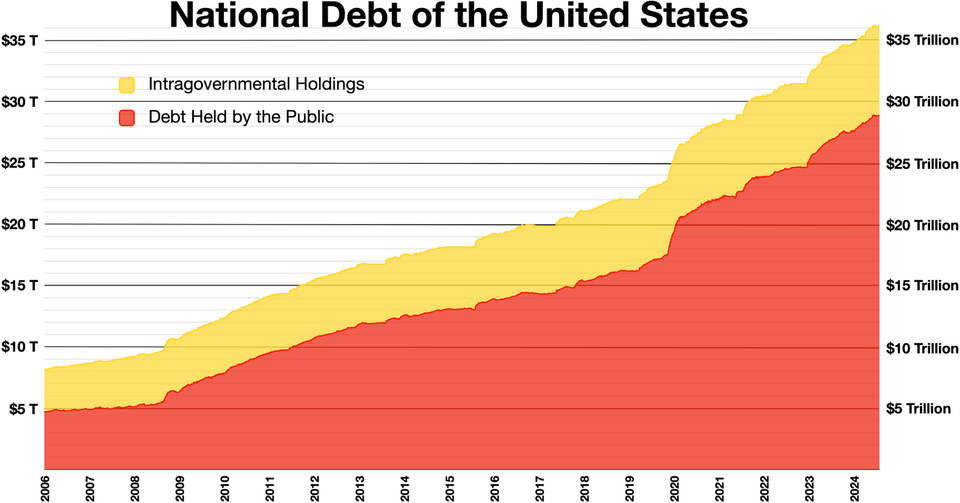Deficit Intuition

If you want to be a single-issue deficit-busting voter, I get it. But all the noise around DOGE is just that, noise. DOGE is absolutely immaterial to budget discussions. You can’t favor cutting the deficit without also embracing the real spending or revenue challenges that underlie it.
To get at the real challenges, it is worthwhile spending some time to build intuition around the budget. I will share a bunch of numbers; they are, in some cases, apples and oranges, but the scale is correct.
USAFacts has an excellent visual summary of our budget. Before any Trump administration activity, we had a $1.8T deficit in 2024. (A giant hat tip to USAFacts, they have tons of excellent info and visualizations, I wish more people used this site). The Congressional Budget Office has an excellent site outlining possible ways to close the gap.
The new House budget resolution passed yesterday ignores the CBO advice and adds $2.5T in new deficit spending over the next decade.
So that is the size of the deficit mountain. Contrast with some of the noisiest efforts underway to close the gap:
- DOGE’s claimed savings to date: $65B.
- WSJ’s Assessment of DOGE’s claim: $2.6B. There is a lot of wishful thinking in the DOGE numbers
- USAID budget in 2023: $40B. Whether you like or hate USAID giving, it is immaterial in budget discussions.
- Even if DOGE could fire every federal worker, total Federal Workforce Compensation in 2022 was $271B. Ie, even if we fired every single federal worker, we wouldn’t come close to the annual deficit numbers — because that is not where the money is.
Sometimes, a visualization is needed to drive the point home — the scale of our deficit is orders of magnitude larger than all the noise around DOGE efforts.

If you want to be serious about cutting the deficit, you have to be equally serious about one or more of these underlying choices:
- Significant revenue increases from personal taxes, corporate taxes, or other sources. The Republican budget resolution cuts taxes; it is not a serious approach to dealing with the deficit.
- Significant cuts in defense and social security/medicare spending. These are third rails in US politics, and it is doubtful anything will happen here
- Significant increase in economic growth rates, which drives revenues. This is politically the most tenable solution, and the USA is pretty good at economic growth; we just need to focus more on it and get out of our own way.
The math is not complicated; and the choices are hard, but obvious.
Comments ()